Springtime in Beijing
For the past three weeks I visited Beijing with a group of twelve New Zealand Chinese Language teachers. We applied for and won a place on the 2017 China Scholarship Programme to Beijing developed by ILEP, Confucius, Hanban and the New Zealand Ministry of Education. We were hosted by Beijing Language and Cultural University that is located nearly in the centre of Beijing and stayed in the conference centre.

Personal Goals
I had three goals for this journey. My first goal was language. I wanted to further develop communication in simple and routine tasks and to exchange information on familiar topics by building on basic phrases because I recently passed the HSK (Level I) exam. My second goal was cultural and to learn more about Chinese history and visit historical sites. Because I am also a teacher of Chinese children I wanted to learn more about where my children came from. My third goal was about connections. Making connections with other educators on the group from New Zealand as well as educators I came into contact with. I also was keen to make connections with local people.
The journey developed more than my three goals.
Language
Daily I was immersed in the language from catching a train, shopping at the supermarket, daily routines such as passing pleasantries with staff at the front desk to asking for my clothes to be washed at the laundry. Daily I was surrounded by language from the fabulous forms of vehicle mashups and their advertising to the signs directing us to uniformed checkpoints and of course wherever we saw food. Daily connections were made with the teachers I travelled with from sharing our learning to being together in the various daily life. I spoke with local people at the historical sites we were taken to, on the trains, at the university canteen, with my home stay and with our tutors and support students. We visited a school and observed a lesson in action. I was delighted to see and hear the traditional student teacher greetings before the lesson that I had heard about. The language lesson was centred around whole group teaching with a focus on traditional poetry. As the teacher unpacked the poem she used videos to give the students imagery written about in the poem because she was aware that many of her students would not have had first hand experience with what the poet was trying to depict. After the lesson observation we had a round table discussion with some their teachers. This part of the session was particularly interesting as we had a compare and contrast discussion between our two systems. The common theme was what was best for our children.
As a group we attended a Kung Fu performance and a Beijing Opera performance so again we were exposed to language but in a different way. Both used a different type of language that I liken to when Samoan matai meet. The language used is similar but the vocabulary is quite different.
The language highlight for me was when we stumbled across the BLCU students’ end of semester talent performance. There we saw and heard language used in singing and when the master of ceremonies introduced each item.
Culture
What I have learnt about Chinese culture is how old and steeped in history the culture is. I saw similarities with my Samoan culture such as some thatching of roofs, the openness of the buildings with the pillars, the use of patterns for effects. I also saw how the young people take care of the old people. I saw grandparents taking care of the grandchildren while parents worked. I also really liked the mishmash of old and new. There appeared to be a sense of evolving as can be seen in the scooters.
We were fortunate to research and prepare for visiting many historical places and were given the opportunity to take part in calligraphy, paper cutting and in Tai Chi Fan movement. During these sessions we were reminded of the ancient history and of how far back Chinese dynasties predates European history. This was particularly so during our time at the National library where we were able to visit the Oracle collection and view ancient writing on bones.
Food
When we talk about language and culture we must also mention food because together everything intertwines. Our daily routine involved food. Our opening and closing days involved food. Our daily excursions involved food. There was lots of it and the price was cheap. Several meals I ate at the BLCU Canteen and the range was massive. A few times we might have paid $20.00 for an evening meal but that was the exception rather than the norm. In Beijing we were exposed to several area cuisines such as Sichuan, Fujian and Jiangsu. We ate several types of street food such as jianbing and investigated nearby eateries such as a local Taiwanese restaurant or a Japanese restaurant. However one memorable and unscheduled meals would have to be from the Nanjing provence hosted by one of our member’s brother. There I tried lotus root stuffed with rice. Our final meal together involved rice flambeed in front of us, eating Peking Duck and an opportunity to sip local spirits. Some mornings I ate yoghurt and peeled fruit rather than go out for breakfast. Sometimes when I needed some quiet time I took a container with me to the canteen and brought back leftovers and had that for dinner. Generally food involved being with people, talking, reminiscing, planning next events and activities or celebrating.
The numbers game.
I am always interested in numbers and am always thinking about how we track what we do. I wore a FitBit and my daily step average was 16,384. By the end of the trip I had walked approximately 250 kilometers and I have walker’s blisters to show for this.
We visited historical sites to learn about history and places of interest where we could observe traditional arts and crafts happening.
- Water Cube & Birds Nest: 4.8km
- Tiananmen Square: 16 Km
- Mutianyu Great Wall: 67 KM
- Forbidden City: 14 KM
- Summer Palace: 9.6KM
- Nanluoguxiang/ South Luogu Alley: 12 Km
- Oriental Charm Market: 23km
- Sun Park: 16 Km
- Pearl Gardens: 36 KM
- Zhujiang Dijing (Host Family): 25 km
- National Library: 8.7 KM
- National Museum of China: 16 Km
- Hanban Confucius Headquarters:
- Tianjin City: 149km
- Liyuan Theatre: 15 KM (Beijing Opera)
- Red Theatre: (Kung Fu Show) 21 Km
My highlight was visiting the Great Wall at Mutianyu. The journey there took us nearly two hours because we were caught in traffic. However once I stood on the wall I felt emotional and a part of something very big. I spent time on my own walking parts of the wall and reflected on my Chinese learning which like the Great wall has been massive. Parts of my learning is crumbling from lack of use and parts are stronger from teaching. Part of my learning is growing as I continue to focus on my goals. I took the chairlift up and the luge back down because my feet were problematic with blisters. Some of the teachers walked up and down the wall and the feedback we gave was to provide more time at this amazing place.

Overall during the journey to Beijing I had travelled 1000 kilometres by bus, by taxi, by subway and by high speed train. In addition I took just over 1300 photos to help capture part of my learning.
Environment
I saw rejuvenation happening. I believe that language and the environment go together and have a belief that the current challenges that Beijing is having with natural resources will continue to improve. When I check new environment I look at the air quality, water quality and soil quality.
We were there in the spring but apart from the blossoms there was no other evidence. The air was as warm as summer because of the low ar quality. There was no spring rain for all the time we were there and I missed the rain. I saw patches with trees and escaped to these sections when I could. However the dust and thickness of the air could not be masked by the greenness of the trees. The sky was quite blue, often cloudless but was generally hazy in the distance. When it was warm and seemed clear I would check the readings and usually went out with my mask.
Water was a premium and I hesitated to eat fruit or vegetables with no skin. So I generally ate imported fruit and ensured that I only ate cooked vegetables. Toilets were interesting because paper was placed in a nearby basket and not flushed down. At the same time I could see that already water was given priority as we were encouraged to keep waste materials separate. For drinking water I initially tried boiling water until the metallic taste put me off. So I switched to bottled water and and churned through nearly four litres daily. It wasn’t enough though because my skin was dry as sandpaper and I found I needed full body moisturizing twice daily.
The soil looked parched and stripped of all goodness. I wondered about what I was eating so stuck to what local people ate. Generally vegetables are eaten cooked. Therefore I did the same and avoided uncooked vegetables.
The birds gave me hope and I would look out for them as I walked to class each day. When we visited sites I would also look out for them. They are indicators of how healthy the environment is. The main birds I saw were the indigenous magpies. They had magnificent colours of an azure green, kind of like our tuis. I also saw one woodpecker.
Transport
I am a travelwise lead teacher so am always interested in public transport and in how cities move people. I loved the Beijing subway system. I found it easy and user friendly. Beijing did not have a separate bus lane like we do in Auckland. However I loved how cycles and electric scooters had their own lanes and how pedestrians had their own lanes and these appeared just as important as cars and buses. I loved seeing the mashup of electric scooters. Some looked like mini trucks, some looked like mini cars and some looked like normal scooters. Everyone using them did not wear helmets and like the cycles seemed to have the same rights as pedestrians. One highlight was catching the high speed train, with a colleague, to Tianjin a nearby city of 19,000,000 people. A city I had never heard of until the week I visited it. Another highlight was activating an Ofo account using wechat. Ofo was one of the bicycle systems we saw. There are several but Ofo caught my eye first because of its bright yellow colour. I had 100 yen transferred to my wechat account from a local resident because I believe a Chinese bank account is needed to activate wechat wallet. I then needed help to activate Ofo because all the instructions were in Mandarin. Once activated I could ride an Ofo bike for one yen (.20c NZ) for 30 minutes. When I reflected on how successful this would be in New Zealand I realised that it would not work as well because helmets are not compulsory in China.
The challenge that Beijing has is traffic. Like every large city cars are everywhere. Travelling on motorways takes a long time and if you plan to take the motorway then ensure extra time is always accounted for.
Internet access
Well where do I begin with this one. The internet is as important to me as natural resources. Coming from New Zealand into Beijing I had to make several adjustments. One was leaving Google behind. That was the most frustrating because I am used to the ease of google for searching, for collaborating and sharing, for site translating, for storage of photos and videos, maps with marker locations. Over the time in Beijing I learnt to adjust to other tools and just had to get on with it. I missed twitter the most because I could not keep up with general education news. I used viber to communicate with family but even that died in my final week. I was determined to cope as a local would without a VPN but maybe I should have ensured that it was working well before I left. I could still get school email on the phone but could not access it via online. I am sure that staff I work with were happy to have a little peace from me.
However the positive was WeChat. We used WeChat as a form of group communication and this worked really well. We could share photos, ask questions and confirm information. I learnt to push out information too using WeChat. For example creating PDFs from powerpoint and uploading them using my computer version of WeChat. I observed how WeChat was used to purchase grocery items, restaurant food, pay for petrol, movies etc. In fact in New Zealand I believe this is definitely an area that is still in early stages. We have to download a movie app to buy tickets, download a petrol app to pay for petrol and so on. But we have yet to develop a system that does all this within one app.
So in order for access, we purchased a local simm card as soon as we could. I could not get a data only plan so went with a month phone plan. Back on campus I also purchased a month’s internet access. Both were adequate for my requirements.
The phone plan gave me access to wechat and maps. Using maps I could navigate the bus and subway systems. I was also able to use the GPS systems to always identify where I was. On campus internet was slower than what I am used to.
Daily routine
Supermarket shopping was part of the regular routine because of the need to buy water. However it was also an excuse to stock up on snack food such as nuts and fruit. What I noticed was alcohol was very cheap. For example a local 1 litre bottle of beer was 90c NZ. Wine however was not cheap. I often bought pistachio nuts, salted plums and dried mangoes. I usually did a daily load of hand washing and was grateful for the hindsight to bring a portable washing line. The bigger items were taken to the local laundry where they would be washed and dried within three hours. I had taken coffee sachets but had not quite taken enough. Coffee was a daily luxury and I limited myself to one sachet. When we were out and about we looked out for café’s that might sell coffee. We did find a starbucks but the coffee was still not that wonderful. Generally coffee came in long sachets with powdered milk and too much sugar. For the first few days I needed a daily nana nap because jetlag affected me but I soon was into the Beijing rhythm.
Connections
For our final session we were instructed to present a reflection about our time in Beijing. I waited to go last because I had created mine a little differently focusing on some funny moments. However as I sat listening to my new friends share their highlights I felt the connections as I nodded and laughed recapping on an incredible three weeks learning. For one of my slides I have put all the highlights together to emphasise what a cram packed cultural and language experience we had. Together we collaborated to create a preparation lesson for each of the sites we visited. We created a variety of debriefs to show our learning and as a resource to use back back in our programmes. We reflected on what we learnt through our highlights presentations and we have returned to New Zealand tired but at the same time rejuvenated in our efforts to teach and share about Chinese language and culture with our students and our peers. However for me the greatest taonga I bring back are the memories of my time with my colleagues as together we navigated our way around Beijing and learnt more about a different culture and language. We have come home with a greater appreciation of our own country and the importance we must give to its environment, culture and language. Highlighted for us is the importance of people whether we are learning in a city of twenty two million people or teaching in a country with four million people.
My daily journal
Throughout my 21 days in Beijing I kept a daily journal that had similar focus areas each day. I kept a record of the air quality, daily temperature and short snippets of activities and places we might have visited. Each day I looked for a cultural element and each day I tried to identify new phrases I had learnt.
Probably my greatest learning was from the other Chinese Language teachers in the group. As part of our brief we needed to create a preparation lesson for upcoming places we would visit. Through them I learnt more about vocabulary and phrases I would need, I learnt about some cultural aspects such as an explanation about the appropriateness of using chopsticks. I also learnt that no matter where we are on our language learning journey we still have some things to learn and with a little research we can still teach in unfamiliar areas.
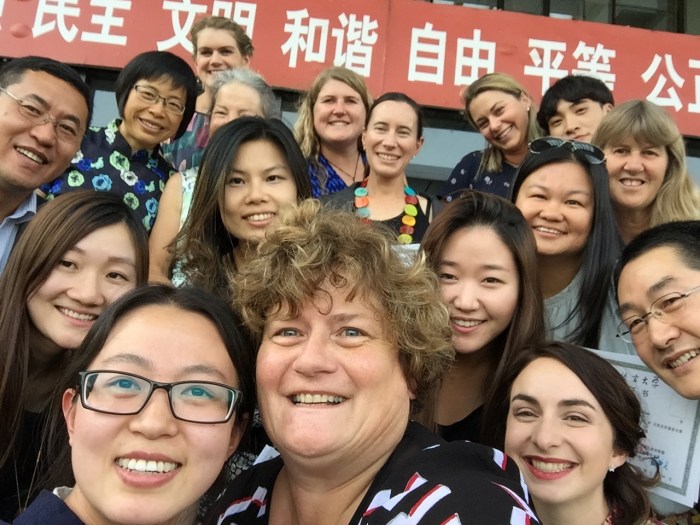
Overall Statement
Overall the purpose of the scholarship was to grow our understanding of Chinese Language and Culture and also to rediscover interesting aspects of our own cultural identity. I believe that together with my goals I have certainly looked at who I am. One beautiful highlight was when I wechatted my Chinese ‘daughter’ living in Shanghai and her young daughter was learning to say Ni hao nǎi nai. (general term for grandmother). My heart is already made up of many bloods and this moment confirmed that there is also a bit of Chinese there. This journey was unbelievable. I have grown as an intercultural educator and return to my school rejuvenated with my work. I am excited to return to my weekly language classes to continue growing my Chinese and look forward to sharing this once in a lifetime experience with the children that I teach and with the teachers that I work with. There are many people and organisations to thank for this opportunity. First and foremost thanks to Fu Jiwei the Chinese National Language Advisor who first alerted me to the programme. He also came with us in a supporting role. Also to ILEP for coordinating the programme.To Liu Hongyuan and Beijing Language and Cultural University for hosting us, providing us with two exceptional guide students Hu an and Siqi and for organising the sites we visited and the cultural activities we took part in. Thanks to our Ministry of Education, Confucius Institute and Hanban for approving the programme. Finally special thanks to Dr Wendy Kofoed and Newmarket School Board of Trustees for giving encouragement and approval for me to go.
I give a shoutout to these amazing Chinese language teachers who helped create fabulous Beijing memories:
Jenny, Elly, Nickie, Jordy, Lizanne, Olivia, Juliet, Karen, Lynn, Ann and Natalie
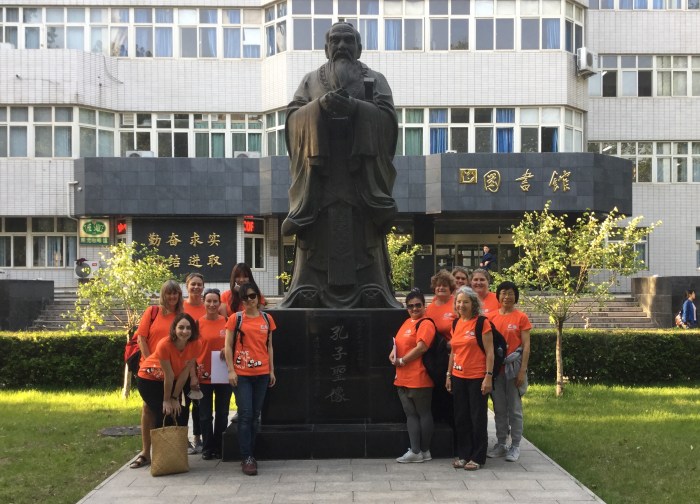
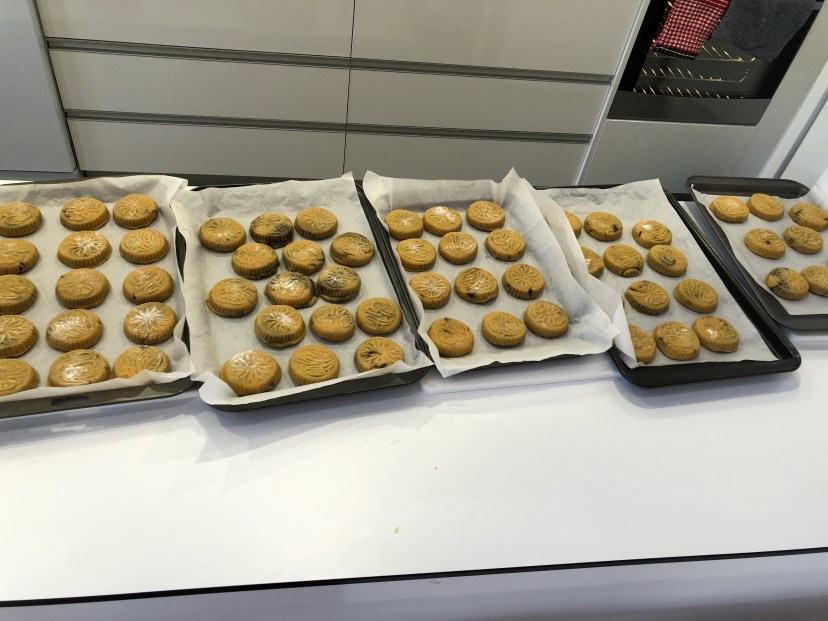
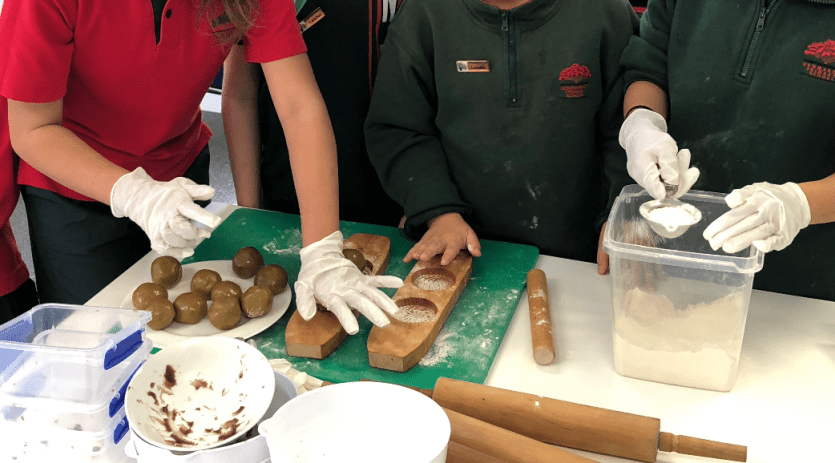


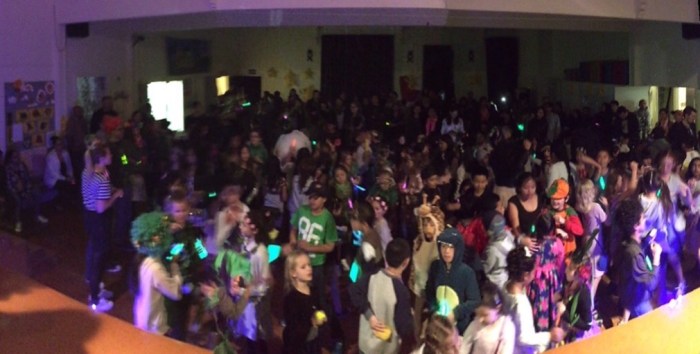






 Chang e -drawn by Seroung
Chang e -drawn by Seroung




